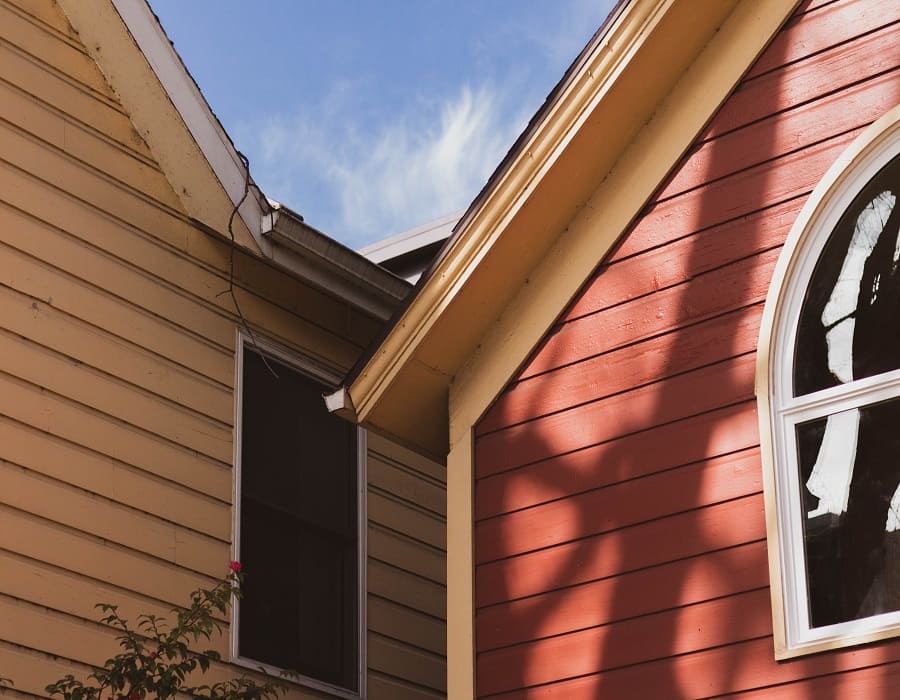Gutter guards, often seen as unsung heroes of home maintenance, play a crucial role in protecting our homes from water damage caused by clogged gutters. With an array of options available, it’s essential to understand the diverse types of gutter guards to make an informed decision tailored to your specific needs.
In this comprehensive guide, we will delve into the world of different types of gutter guards, their features, advantages, and potential drawbacks.
What are the different types of gutter guards?
Here are different types of gutter guards;
1. Mesh Gutter Guards
One of the most prevalent types, mesh gutter guards, employs a fine mesh or screen that covers the gutter. This design allows water to pass through while effectively blocking leaves, twigs, and other debris.
Features: – Fine mesh prevents small debris from entering. – Easy installation and relatively affordable. – Available in different materials, including stainless steel and aluminum.
Benefits: – Highly effective in preventing clogs. – Low maintenance. – Suitable for various climates.
Drawbacks: – May require occasional cleaning if fine debris accumulates.
2. Reverse Curve Gutter Guards
Reverse curve gutter guards leverage the principle of water adhesion, directing water into the gutter while deterring leaves and debris from entering.
Features: – Curved design encourages water flow into the gutter. – Durable materials like aluminum or PVC. – Resistant to rust and corrosion.
Benefits: – Minimal maintenance. – Effective against leaves and larger debris. – Suitable for areas with heavy rainfall.
Drawbacks: – May be less effective in preventing fine debris.
3. Bottle Brush Gutter Guards
Bottle brush gutter guards consist of bristles or brushes that sit inside the gutter, allowing water to pass through while blocking leaves and debris.
Features: – Bristles made of durable materials like polypropylene. – Easy installation and customizable to fit different gutter sizes. – Resistant to pests.
Benefits: – Effective against leaves and larger debris. – Easily removable for cleaning. – Long lifespan.
Drawbacks: – May require occasional cleaning, especially in heavy debris conditions.
4. Foam Gutter Guards
Foam gutter guards are inserts made of porous foam that fit into the gutter, allowing water to pass through while blocking debris.
Features: – Lightweight and easy to install. – Resistant to mold and mildew. – Compatible with various gutter types.
Benefits: – Cost-effective. – Suitable for DIY installation. – Provides insulation against freezing.
Drawbacks: – May require replacement over time.
5. Micro-Mesh Gutter Guards
Micro-mesh gutter guards feature an extremely fine mesh that prevents even the smallest debris, such as pine needles and shingle grit, from entering the gutter.
Features: – Fine mesh with openings typically smaller than 100 microns. – Durable materials like stainless steel. – Effective in various climates.
Benefits: – High level of debris protection. – Low maintenance. – Suitable for areas with heavy foliage.
Drawbacks: – Higher initial cost.
6. Helmet or Helmet-Style Gutter Guards
Helmet or helmet-style gutter guards consist of a solid surface that covers the gutter, allowing water to adhere to the surface and flow into the gutter while preventing debris from entering.
Features: – Solid surface repels debris. – Durable materials like aluminum or PVC. – Available in various colors to match roof aesthetics.
Benefits: – Effective against leaves and larger debris. – Low maintenance. – Suitable for various roof types.
Drawbacks: – Higher initial cost.
7. Brush or Hedgehog Gutter Guards
Brush or hedgehog gutter guards are made of bristles or spikes that sit inside the gutter, allowing water to flow through while blocking debris.
Features: – Bristles or spikes made of durable materials. – Easy installation and customizable to fit different gutter sizes. – Resistant to pests.
Benefits: – Effective against leaves and larger debris. – Easily removable for cleaning. – Long lifespan.
Drawbacks: – May require occasional cleaning, especially in heavy debris conditions.
8. Perforated Gutter Guards
Perforated gutter guards consist of a solid surface with small holes or perforations that allow water to enter the gutter while preventing debris from clogging.
Features: – Solid surface with small holes. – Durable materials like aluminum or steel. – Available in different styles and colors.
Benefits: – Effective against leaves and larger debris. – Low maintenance. – Suitable for various climates.
Drawbacks: – May be less effective in preventing fine debris.
These are the different types of gutter leaf guards that you must know!
Pictures of different types of gutter guards
You can also view the pictures of different gutter guards here for your convenience.
Conclusion
In conclusion, in the vast landscape of different types of gutter guards, each type comes with its unique set of features, benefits, and drawbacks. Choosing the right one for your home requires consideration of factors such as climate, surrounding vegetation, and personal preferences.
Whether it’s the fine mesh of mesh guards, the water adhesion principle of reverse curve designs, the bristles of bottle brush inserts, the porous foam of foam guards, the ultra-fine mesh of micro-mesh solutions.
The solid surface of helmet-style guards, the bristles of brush guards, or the perforations of perforated guards. Each type plays a vital role in ensuring the longevity and efficiency of your gutter system.

